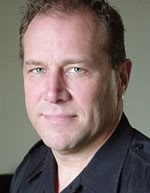November 22, 2013
Audit targets agency running renowned Vancouver supervised-injection site
By FRANCES BULA
Vancouver Coastal Health and BC Housing are conducting review on PHS Community Services
The community agency that runs Canada's only safe-injection site, as well as numerous housing projects and social enterprises for troubled residents of the Downtown Eastside, is now having its finances audited by both of its two major government funders.
Vancouver Coastal Health confirmed to The Globe and Mail this week that PHS Community Services, commonly known in the city as the Portland, is being audited to determine "whether PHS has the financial capacity to provide the services to clients it is contracted for."
The agency has agreements worth $8.5-million from the regional health authority through 19 contracts. News of the health authority audit follows confirmation two weeks ago that BC Housing is also conducting a financial review of the Portland's finances.
It's a troubling development for the 20-year-old organization, renowned for the scope of its services in the Downtown Eastside that go far beyond what other housing non-profits do.
PHS runs the city's main supervised-injection site, Insite, the Pigeon Park credit union, a health clinic, half a dozen social enterprises ranging from a laundry to honey-making and chocolate-making operations and 950 units of housing spread out among 16 sites for some of the most difficult-to-house people in the city.
Its founders, Mark Townsend and Liz Evans, have won awards for their work and attracted the attention of national politicians and international celebrities, most recently English superstar comedian and commentator Russell Brand, who visited Insite earlier this fall.
They're also legendary for being willing to go to the wall in public campaigns for programs and services, sometimes fighting with their own funders. The group started the lawsuit against the federal government to keep the city's supervised-injection site open, eventually winning the case.
But the financial operations for this complex empire have always been a subject of mystery and interest to those in the Downtown Eastside world.
PHS's filings to Revenue Canada, required for charities, indicate it owns $58-million worth of property. Those filings also indicate it paid six people in its organization between $120,000 and $160,000 last year, and another four between $80,000 and $120,000 – significantly more than any of the other big housing non-profits that operate in the Downtown Eastside.
[I KNOW OF NO OTHER PEOPLE IN THE ADDICTIONS RECOVERY OR TREATMENT BUSINESS WHO ENJOY THESE KINDS OF REWARDS OR MANAGE PROPERTY PORTFOLIOS THIS EXTENSIVE. THERE IS MUCH MORE TO COME ON THIS STORY. David Berner]
Mr. Townsend, BC Housing and the health authority have all avoided commenting on the specifics of the audit and financial review.
"In the case of PHS, we also understand they have faced some recent financial challenges, so this has given us additional reason to pursue that line of inquiry," Vancouver Coastal Health said in a statement to The Globe and Mail.
There are no court records indicating that PHS has unpaid creditors asking for money.
Mr. Townsend said PHS is working with both groups of financial reviewers to see what can be improved.
"We provide a lot of cost-efficient, effective services but that doesn't mean we can't do better."
Asked about the number of high salaries, he said that the group's global administration fee, as set by its funders, is nine per cent and PHS has stayed within that.
He said PHS employs a number of professionals – doctors, psychiatrists and others – whose services cost a lot.
He also emphasized the agency has a proven track record of service in the city.
"We've been operating for 20 years. In that time, we've provided important services for a group of difficult people, all within a context of a challenging financial framework."












